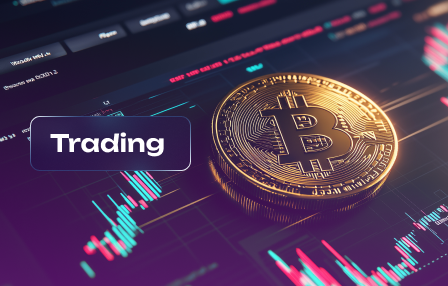The Psychology of OTC Traders – Who Are the Biggest Players?
March 13, 2025
To truly grasp the behavior of influential market participants, focus on their analysis techniques. These individuals utilize a blend of psychological insights and data interpretation to steer their trading strategies. Recognizing patterns in their decision-making can provide a significant edge when entering this competitive arena.
Behavioral tendencies among these key actors often hinge on emotional responses to market fluctuations. Their reactions to news events, economic indicators, and peer actions profoundly influence trading outcomes. Understanding these dynamics enables aspiring traders to anticipate moves and align their tactics accordingly.
Incorporating psychological principles into trading approaches can enhance performance. Pay attention to how sentiment sways decisions; fear and greed play pivotal roles. By analyzing these emotions within market contexts, traders can refine their strategies, mitigating risks while capitalizing on opportunities presented by fluctuating trends.
Risk Assessment Techniques Used
Implement dynamic risk models to analyze market behavior. Incorporate both quantitative and qualitative assessments to gauge potential exposure.
- Value at Risk (VaR): Estimate potential losses in a portfolio over a specified time frame with a given confidence level, providing a statistical measure of market risk.
- Stress Testing: Simulate extreme market conditions to evaluate how different players’ strategies might hold up under pressure.
- Sensitivity Analysis: Assess how changes in market variables influence overall portfolio value, helping traders identify vulnerabilities.
Psychological factors significantly impact decision-making. Traders must recognize emotional biases that can skew risk perception.
- Loss Aversion: Understand that players often fear losses more than they value gains, which may lead to overly conservative strategies.
- Overconfidence Bias: Acknowledge the tendency to overestimate personal knowledge or ability, resulting in undue risks.
- Herd Behavior: Watch for trends where traders follow the crowd, potentially leading to bubble formations or crashes.
Regular performance analysis is crucial. Track key metrics to refine strategies based on historical behavior.
- Sharpe Ratio: Measure risk-adjusted return by comparing excess return to standard deviation, facilitating better comparison across investments.
- Max Drawdown: Evaluate the largest peak-to-trough decline during a specific period, identifying possible downturns in strategy effectiveness.
Continuous learning from past trades enhances future decision-making processes. Integrate feedback loops for ongoing improvement.
A proactive approach is necessary. Monitor external influences like economic indicators, geopolitical events, and regulatory changes that can impact market dynamics and trader psychology.
Coping with Market Volatility
Implement a robust risk management strategy. Allocate a specific percentage of your capital to different trades, ensuring that no single position jeopardizes your overall portfolio.
Utilize advanced technical analysis tools to identify patterns and trends. Charting software can help pinpoint entry and exit points while assessing market sentiment.
Incorporate psychological factors into trading decisions. Understanding how emotions impact behavior allows players to mitigate impulsive actions during turbulent times.
Develop strategies that adapt to changing conditions. Employ techniques like hedging and diversification to buffer against sudden price swings.
Engage with other market participants. Insights from fellow market players can influence your approach, providing alternative perspectives on volatility.
Stay informed on macroeconomic indicators and geopolitical events. These factors often dictate market behavior and can provide context for price movements in the OTC environment.
Review past trades regularly. Analyzing what worked and what didn’t will refine your strategies, enhancing resilience during future fluctuations.
Maintain a long-term outlook while managing short-term risks. Balancing immediate reactions with broader goals helps prevent hasty decisions driven by temporary volatility.
Decision-Making Under Pressure
Prioritize preparation. Players in volatile markets must develop strategies that allow for quick analysis and decisive action. Utilize simulation tools to practice decision-making in high-pressure scenarios; this builds confidence and sharpens instincts.
Analyze past performance under stress. Review trades made during volatile periods, noting emotional responses and behaviors that influenced decisions. Identify patterns that led to both successes and failures, allowing for more informed choices in future situations.
Incorporate psychological techniques like mindfulness and breathing exercises. These can help manage stress levels during critical moments, fostering clarity and focus essential for making sound judgments.
Engage with peers or mentors for insights on their coping mechanisms. Sharing experiences can reveal diverse strategies that enhance understanding of market dynamics and trader psychology.
Establish clear thresholds for risk tolerance. Define specific parameters that trigger action, ensuring decisions align with long-term objectives rather than impulsive reactions to market fluctuations.
Leverage technology for real-time data analysis. Tools that provide instant feedback on market movements can significantly influence behavior, allowing traders to adapt strategies swiftly while minimizing the impact of pressure.
Regularly assess emotional intelligence. Recognizing one’s own emotional triggers and biases can lead to better control during stressful market conditions, ultimately enhancing decision-making capabilities.
Building Strategic Relationships
Create partnerships with key market participants to enhance trading outcomes. Establish direct lines of communication with liquidity providers, brokers, and institutional investors. This facilitates real-time information sharing, influencing decision-making processes.
Leverage psychological insights to understand the behaviors of your counterparts. Analyze their motivations and risk appetites; this knowledge is invaluable in negotiations and collaborations. Recognizing patterns in behavior aids in predicting responses, thus refining strategies for engagement.
Attend industry conferences and networking events to build rapport with influential figures. Building trust over time can lead to beneficial exchanges of market intelligence and proprietary insights that can inform trading strategies.
Utilize technology to maintain relationships effectively. Employ CRM systems to track interactions, preferences, and historical data of partners. This analytical approach allows for tailored communications that resonate with their interests, further solidifying connections.
Continuous assessment of relationship dynamics is crucial. Monitor the impact of external market shifts on these partnerships; adapt strategies accordingly to ensure mutual benefit and sustainability. Regularly revisit the terms of collaboration, aligning them with evolving market conditions.



